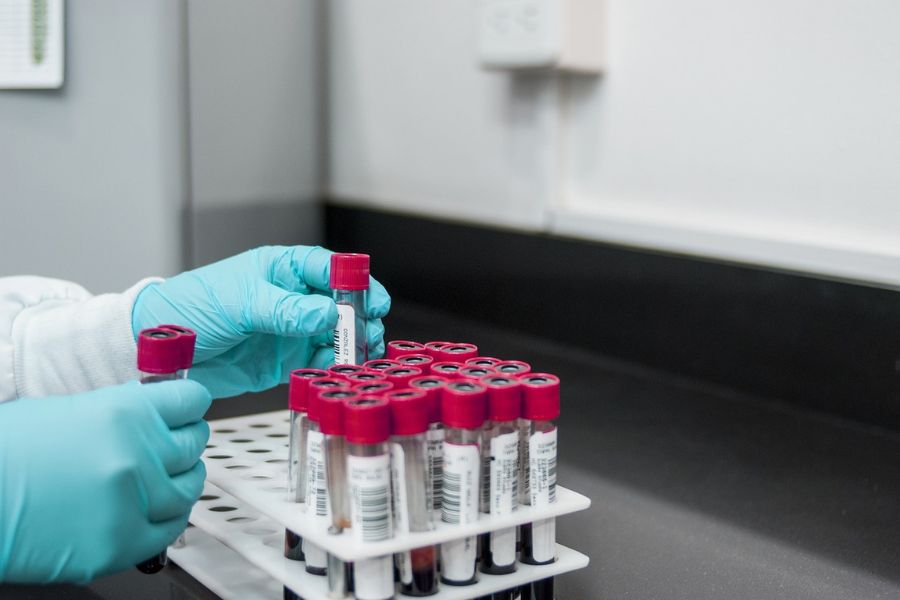Follistatin is a naturally occurring protein that has been hypothesized to inhibit the action of myostatin, a protein that controls the process of muscle synthesis. Studies suggest Follistatin may promote muscle development by binding to myostatin and blocking it from regular activities.
Research suggests Follistatin may cause muscular development and strength and activate the protein kinase Akt, which might help control cell proliferation and survival. Researchers speculate that Follistatin may have other properties besides increasing muscle mass, such as lowering inflammation and bone density. Follistatin and its interaction with activin have also been the subject of much biochemical study. In the gonad, pituitary gland, uterine membranes, vasculature, and liver, these proteins play a new and important function as tissue regulators. Follistatin may stand out among the many disorders being investigated for possible relevance in related research studies. These include cancer, osteoporosis, and muscular dystrophy. It is also being studied to potentially increase strength and muscle cell growth.
The potential of Follistatin in the context of genes has recently been investigated. Gene therapy uses a vector, such as a virus, to introduce a functional copy of a gene, thereby curing genetic illnesses. Scientists consider it a potential route for giving Follistatin in the context of various illnesses. The basic premise of the Follistatin gene agent is that it might enhance strength and muscular hypertrophy by increasing protein production in cells.
Follistatin research is a dynamic and promising field with several promising research applications in the gene context. Research models of various illnesses have been evaluated under exposure to this peptide in animal research.
Follistatin Peptide and Activins in Muscle
In its normal state, myostatin limits the growth of skeletal muscle mass; it is a member of the TGF-β family. Studies suggest that myostatin activity can be inhibited in vitro, and muscle development may be enhanced by the myostatin-binding protein Follistatin. It has been suggested that mice with a mutation in the Fst gene die soon after birth and have less muscle tissue, suggesting a function for Follistatin in controlling the process of myogenesis. Researchers hint here that Fst mutant mice display haploinsufficiency, characterized by muscles of Fst heterozygotes being much smaller, exhibiting a change toward more oxidative fiber types, impaired remodeling of muscles after cardiotoxin injury, and reduced tetanic force production with preserved specific force. They propose that in an Mstn-null setting, the impact of heterozygous fat loss is largely preserved, suggesting that Follistatin may typically inhibit other members of the TGF-β family than myostatin to control the growth of muscles. Lastly, they provide genetic data suggesting that activin A may be a follistatin-regulated ligand that limits muscle hypertrophy in conjunction with myostatin. These results might greatly impact the development of options that target this signaling system to conserve muscle mass and prevent atrophy in many kinds of muscle degeneration, both hereditary and acquired.
Follistatin Peptide and Bone Metabolism
Investigations purport that many different tissues may contain Folistatin, a monomeric glycoprotein. New data suggests this protein may have a broad spectrum of functions since it is a pluripotential molecule with no structural similarities with other transforming growth factor (TGF)-β superfamily members. Activins and other members of the TGF-β superfamily have a role in bone metabolism. They are involved in a wide range of bone physiological processes, including induction of cartilage, bone formation, turnover, and growth. Follistatin has been theorized as crucial for bone metabolism and development because it antagonists the TGF-β superfamily members.
Follistatin Peptide and BMD
Findings imply an increase in skeletal muscle mass may be achieved by inhibiting the myostatin pathway, carried out by the ubiquitous secretory pro-peptide Follistatin. Its potential to inhibit the release of follicle-stimulating hormone (FSH) and interact with the pituitary activin-inhibin axis warranted care in its adjuvant use. One of the Follistatin variants that undergoes post-translational modification to FS315—FS344—seemed able to escape this constraint. Compared with FS288, this serum-based Follistatin isoform appears to bind activin ten times less closely. The Follistatin gene was speculated in preclinical research to increase muscle growth. This article summarizes the research indicating that Follistatin may be used as a genetic enhancer to boost cell function. Furthermore, scientists provide further insight into the outcomes of the first gene transfer study using the FS344 variant of Follistatin in research models diagnosed with Becker muscular dystrophy. They also discuss potential avenues for future gene option studies with Follistatin.
For molecular-based methods to manage muscular dystrophies, the Translational Gene Therapy Center has used small-molecule compounds for exon-skipping mutation suppression and gene transfer to replace or give surrogate genes. One way to fix the reading frame is by skipping exons, which may be done at the pre-mRNA level. Research studies have been conducted using two distinct oligomers in Duchenne Muscular Dystrophy (DMD): a phosphorodiamidate morpholino (PMO) and a 2'O-methyl-ribo-oligonucleoside-phosphorothioate (2'OMe). Both have suggested promising results in their early stages. Suppressing stop codons is another molecular strategy for enhancing DMD gene readthrough. Using the aminoglycoside gentamicin, scientists have indicated proof of concept for mutation suppression.
Researchers have finished two studies and started a third using a gene therapy technique. They used an adeno-associated virus (AAV)-transferred mini-dystrophin for DMD. An unexpected and helpful conclusion that will influence future research is observing an immune response directed against the transgenic product in this study. Once again, AAV was used to transfer the transgene for limb girdle muscular dystrophy 2D (alpha-sarcoglycan deficiency). However, this time, the muscle-specific creatine kinase promoter seemed to regulate gene expression, and the effects of this transfer were speculated after six months. Transferring the Follistatin gene from an AAV vector straight to the quadriceps muscle is the subject of a third gene experiment. Gene transfer is taking place for two disorders, sporadic inclusion body myositis (IBM) and Becker muscular dystrophy (BMD), both of which cause a weakening in the quadriceps muscles. This research aims to find ways to make muscles stronger and larger.
Researchers interested in peptides for sale online are encouraged to navigate the Core Peptides website for the highest quality research compounds and the most informative peptide blog.
References:
[i] Al-Zaidy, SA et al. (2015) Follistatin Gene Therapy Improves Ambulation in Becker Muscular Dystrophy. Journal of Neuromuscular Diseases 1185-192 DOI 10.3233/JND-150083
[ii] Buehring, B. & Binkley, N (2013). Myostatin—the holy grail for muscle, bone, and fat? Current Osteoporosis Reports 11(4):407-14
[iii] Garatachea, N et al. (2013). Association of the K153R polymorphism in the myostatin gene and extreme longevity 35(6):2445-54. doi: 10.1007/s11357-013-9513-3.
[iv] Jaijyan, D.K. et al. (2021) New intranasal and injectable gene therapy for healthy life extension. bioRxiv Preprint.
[v] Kota, J et al. (2009). Follistatin gene delivery enhances muscle growth and strength in nonhuman primates. Science Translational Medicine. 1(6):6ra15 doi:10.1126/scitranslmed. 3000112
[vi] Mendell, J et al. (2012). Gene therapy for muscular dystrophy: lessons learned and path forward. Neuroscience Letters. 527(2):90-9
[vii] Se-Jin Lee, Yun-Sil Lee, Teresa A. Zimmers, Arshia Soleimani, Martin M. Matzuk, Kunihiro Tsuchida, Ronald D. Cohn, Elisabeth R. Barton, Regulation of Muscle Mass by Follistatin and Activins, Molecular Endocrinology, Volume 24, Issue 10, 1 October 2010, Pages 1998–2008,
[viii] A. Gajos-Michniewicz, A. W. Piastowska, J. A. Russell & T. Ochedalski (2010) Follistatin as a potent regulator of bone metabolism, Biomarkers, 15:7, 563-574, DOI: 10.3109/1354750X.2010.495786
Disclaimer: This is a sponsored article and does not involve any editorial input. The views expressed, including any statements, views, opinions, announcements, declarations, or affirmations are neither supported, nor endorsed by The Telegraph Online.










